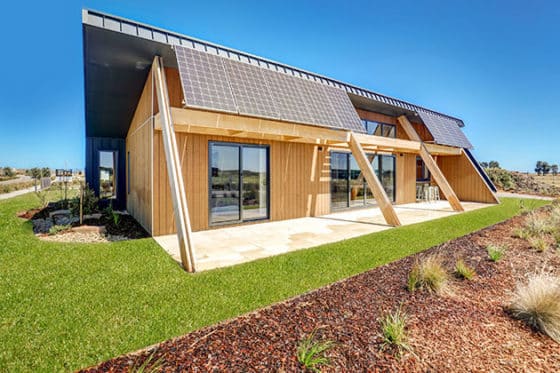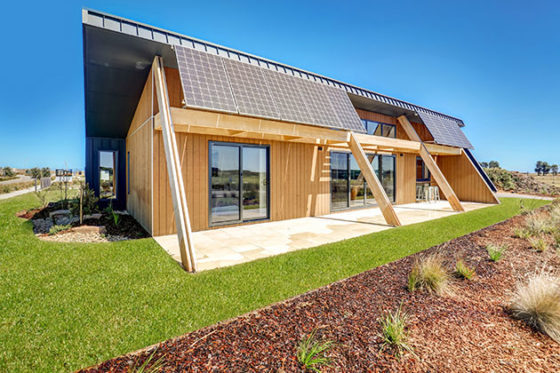
Biofriendly Inventions That Could Change The Way We Live
Sustainability is going to be a hot topic of conversation for a very long time, especially if we’re serious about protecting the environment and taking steps to counteract climate change. Many of us have parents, grandparents and great grandparents who all incorporated sustainable and biofriendly actions into their day-to-day lives. Growing gardens, composting, using leftovers rather than wasting food, hanging clothes out to dry, saving energy, riding bicycles, walking or taking public transportation instead of driving, etc. are just a few of the actions they took.
While many people are taking individual steps towards living more sustainable lives (and they should continue doing so), the following are a few biofriendly inventions that could make broad scale changes to the way we live:
Edible Packaging
Biodegradable and edible dinnerware (plates, cups, bowls, cutlery and straws) has become more popular as people are beginning to realize the harmful effects of plastic single- or one-use items to not only their health, but to the environment as well. It is for this reason companies have began working on creating edible packaging. One company has created seaweed-based edible packaging that could be used in the place of all the plastic packaging making its way to our oceans and seas. Another group of scientists has developed an all-natural edible packaging made from Russian apples.
Even breweries are catching up with the times and beginning to create biodegradable six pack rings. While these aren’t necessarily intended to be edible for humans, if sea animals get a hold of them, eating the rings wouldn’t be harmful to their health. This is definitely a much better option than the existing plastic rings which are not only harmful when ingested, but can prove fatal. I’m still not convinced edible water blobs or pods are the way to go. I’m quite content with using my reusable water bottle right now, but you never know.
Overall, I hope we’ll see a lot more biofriendly options like edible and biodegradable packaging in the coming years. Can you imagine being able to buy a product without having to throw away a plastic wrapper or container? Creates a lot less waste and significantly lowers our carbon footprint.
Outdoor Air Purifiers
Years ago we heard talk of a smog sucking billboard designed to remove harmful toxins from the air. A single billboard could reportedly remove enough pollution to be the “purifying equivalent of 1,200 trees.” Then, earlier this year, China began testing a giant, outdoor air purifying system intended to help clean the air and dramatically reduce the pollution in and around one of the countries most smog-filled cities. If this works, similar towers or chimneys might be built to aid in purifying the air throughout China and other countries.
You shouldn’t necessarily expect this type of system to go mainstream quite yet, though. Planting trees, switching to renewable energy sources, opting for more biofriendly forms of transportation and figuring out other ways to lower harmful emissions can also go a long way towards improving outdoor air quality.
Sustainable Smart Homes and Apartments
Smart homes are no longer a thing of the future. Many people, even if they don’t have a fully-functional smart home, have components of a smart home. Some people have NEST thermostats, smart speakers, automated lighting, app-controlled heating and air conditioning, video doorbells, smart appliances and more. Even though my family and I live in an apartment, the management company for our apartment building recently had NEST thermostats installed in all the units to help make the apartments more eco-friendly and smarter.
Elon Musk recently hinted about taking things one step further with the creation of a more energy-efficient air conditioning system as part of a ‘Tesla Smart Home’. Apparently, the idea is the system would be able to know when you are close to home (maybe tracked through your EV or an app) and begin to turn on cooling/heating in the rooms you are likely to use. The hope is this would use less energy overall. Of course, if you are tapped into renewable energy sources through solar panels or a wind turbine, your smart home would be even smarter and more sustainable.
Electric Vehicle Infrastructure
While we’ve heard much talk over the years about how solar roads could change how we power the world, it seems like our need for an electric vehicle infrastructure might be a little more front and center in the minds of drivers these days. Fortunately some states, like the state of California, already have plans going into effect to set up an EV infrastructure to help charge all the electric cars on the road these days. Some of these systems would be in homes and the rest available for the general public. Individual companies like Tesla, ChargePoint, EVgo and others have also been working to increase the number of public EV charging stations across the U.S. and around the world.
With all of the hype about flying cars and taxis coming to the market in a few years (many of which are apparently going to be all-electric or at least hybrid-electric), success in these types of endeavors kind of depends on having an electric vehicle infrastructure in place. So, you should probably expect to see more and more electric vehicle charging and supercharging stations popping up near you.
Carbon Positive Building
Green architecture and design is heading to a whole new level. People are no longer completely satisfied with having a few solar panels thrown on their roof, especially when carbon-positive home are available. We’re not talking just net-zero energy, but carbon positive. A home like the CORE 9 home by Beaumont Concepts is so eco-friendly and sustainable the home actually generates more energy than it needs to operate. What’s great about the CORE 9 buildings is they are relatively affordable too. “The home’s name is an acronym. The C stands for carbon positive, the O for zero waste, the R for recyclability and the E for economics.”
It’s likely we’ll see more homes and other structures being built with this sustainable and biofriendly frame of mind.




Post a comment